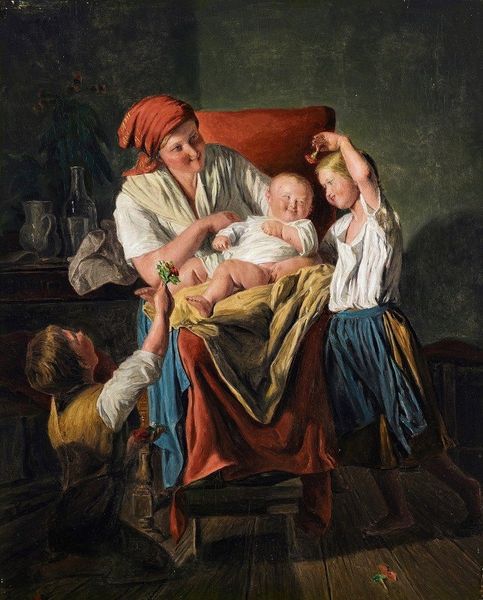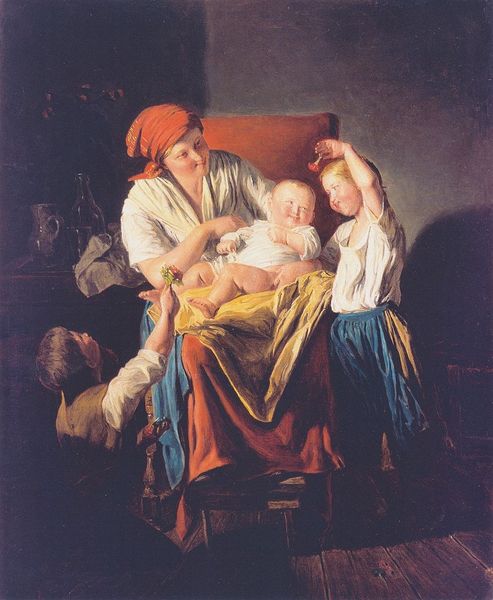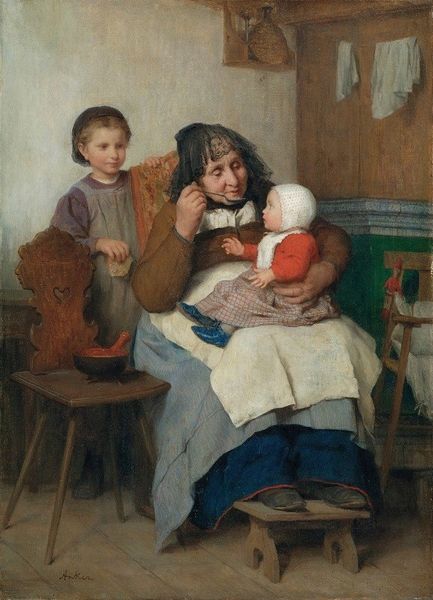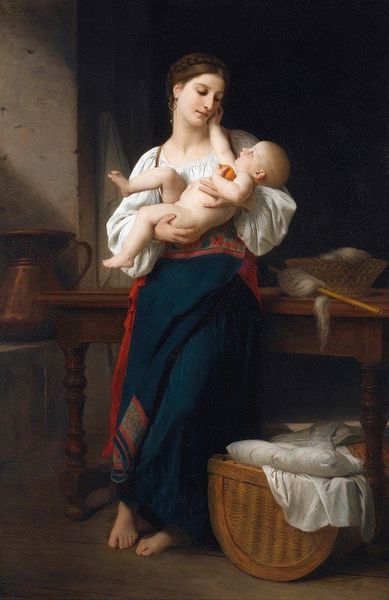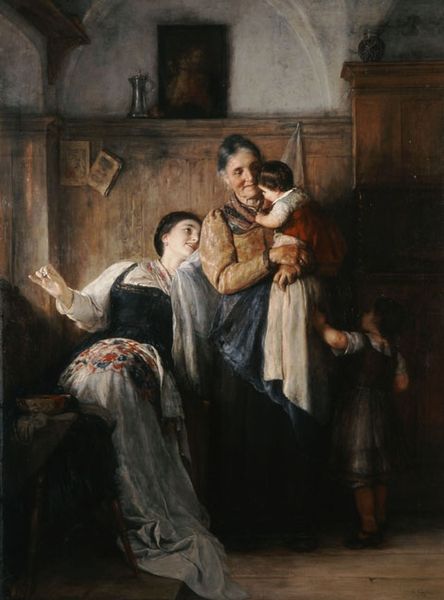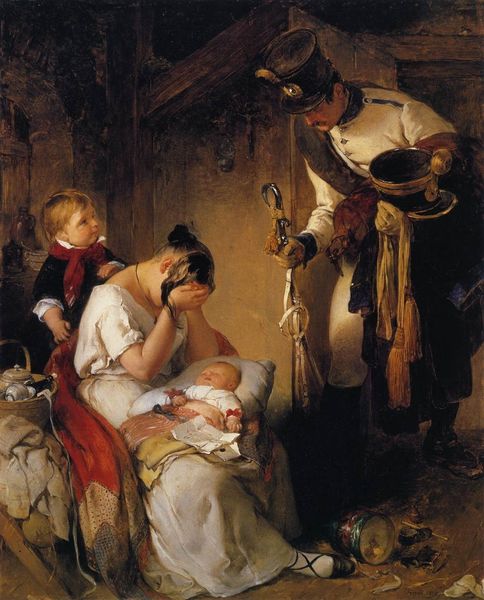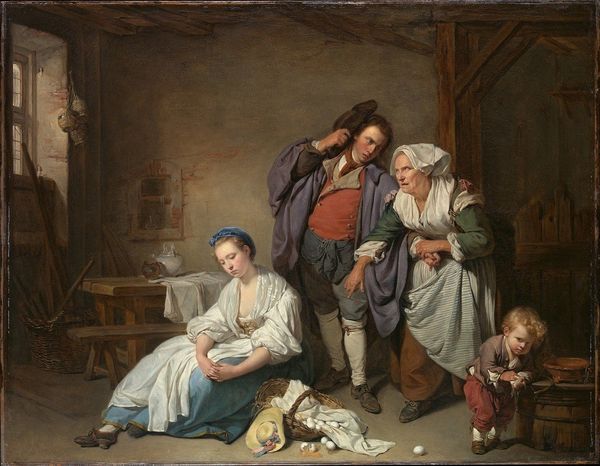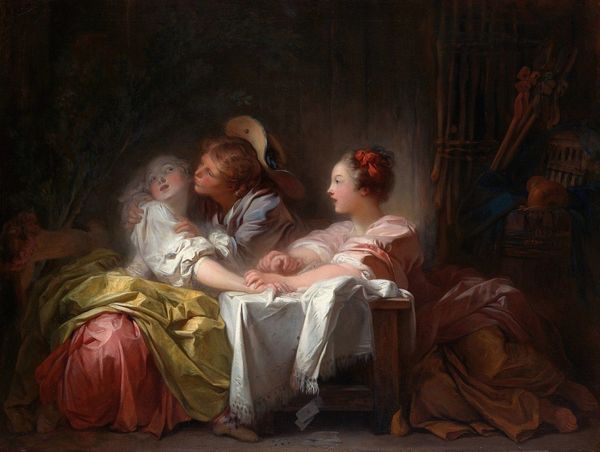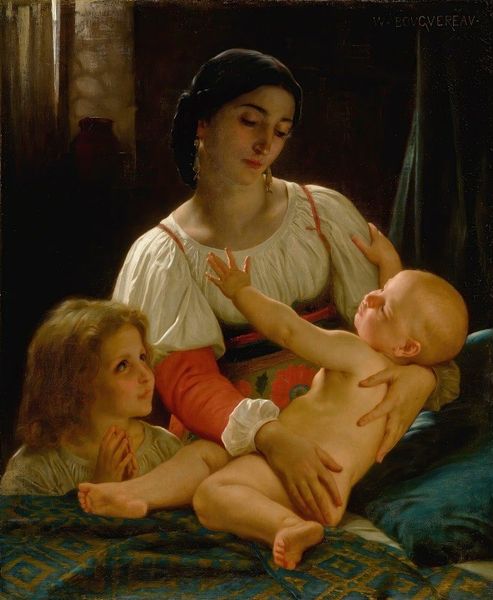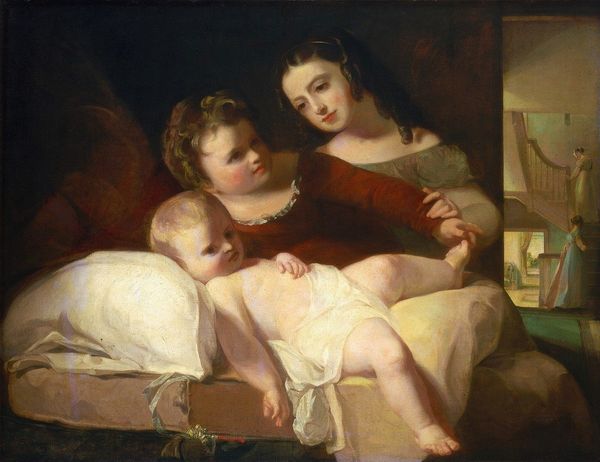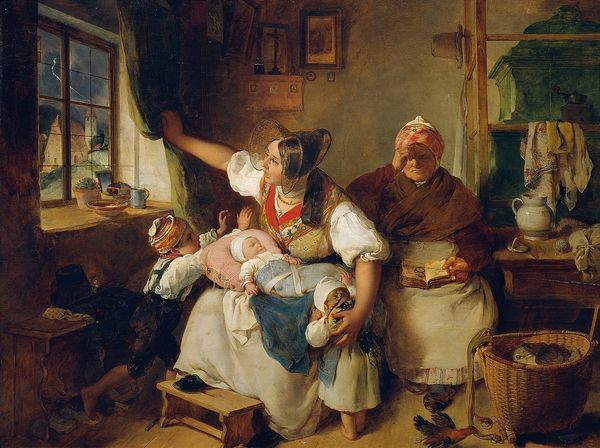
Copyright: Public Domain: Artvee
This oil on canvas, by the Austrian painter Ferdinand Georg Waldmüller, presents a scene of domestic bliss. Painted during the Biedermeier period, which emphasized middle-class values and family life, Waldmüller's work reflects a widespread desire for stability. Take note of how this idealized image of motherhood subtly reinforces traditional gender roles and social hierarchies. Its display in the galleries of the time served to further normalize these roles. The cultural references are clear, referencing the idea of “muttergluck,” or “mother’s happiness,” which became a popular theme in art and literature. Waldmüller catered to the tastes of an emerging middle class, creating images of rural life that were both sentimental and moralizing. Through his work, institutions shaped the public's perception of family values. To truly understand its significance, we might examine the art market, exhibition records, and publications of the period. The meaning of art is always contingent on its social and institutional context.
Comments
No comments
Be the first to comment and join the conversation on the ultimate creative platform.
